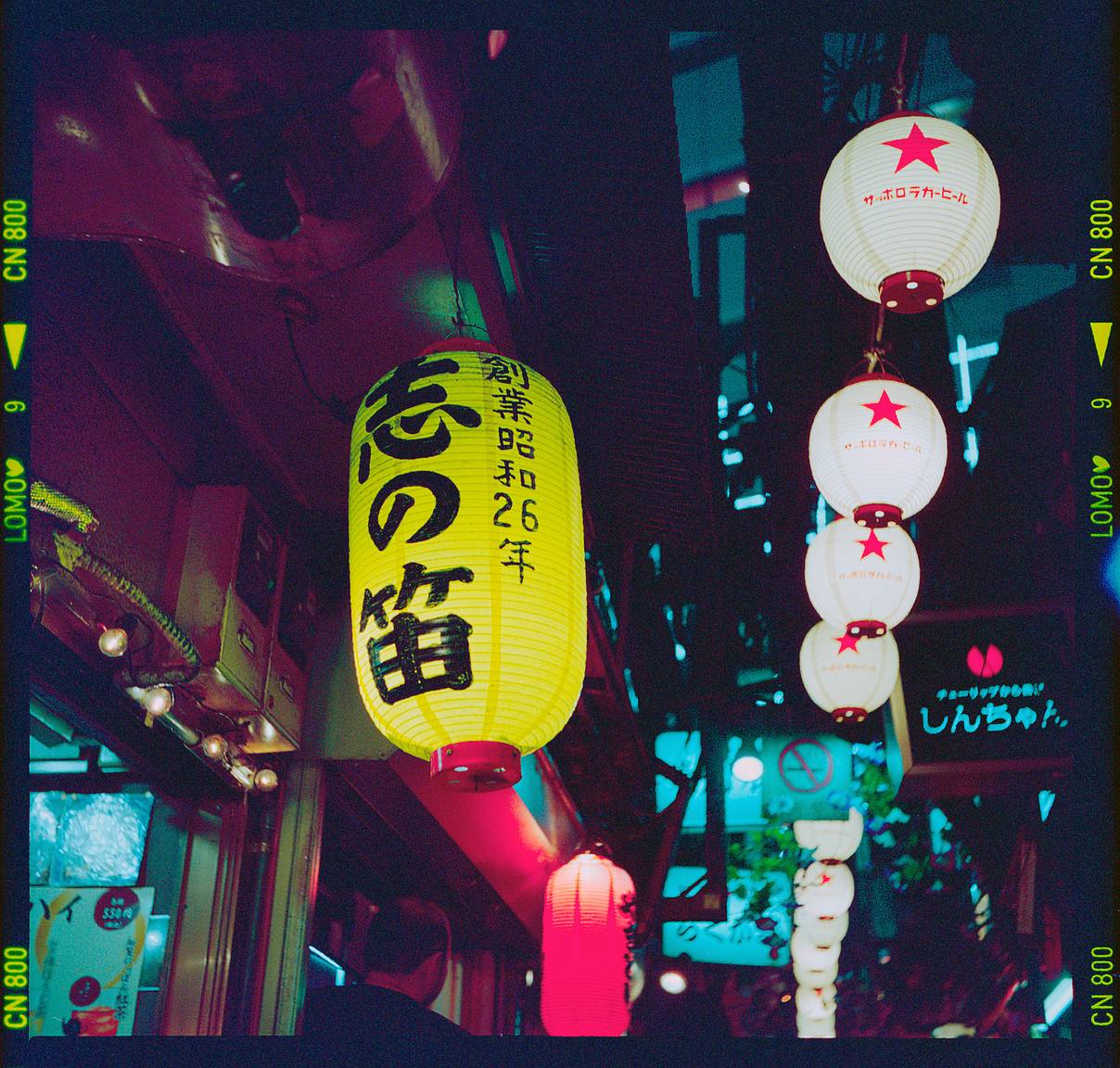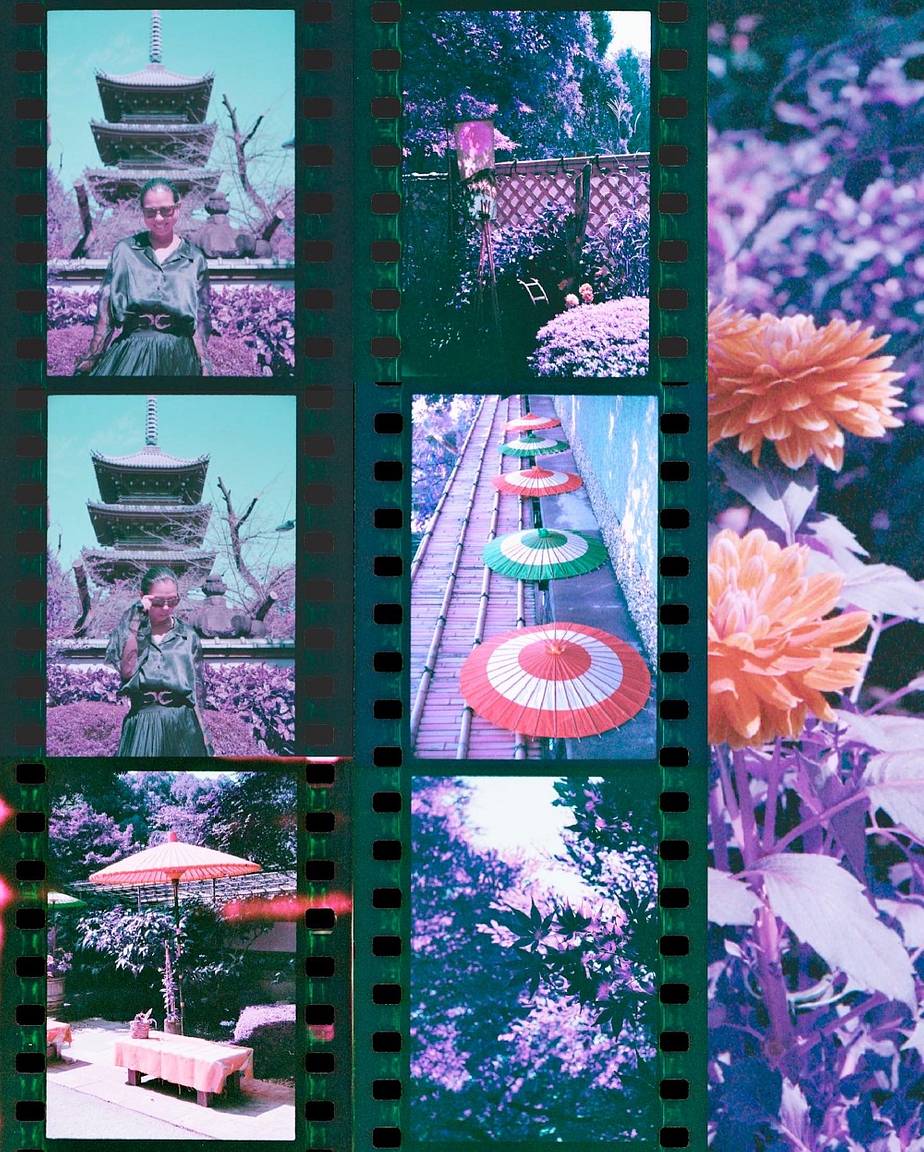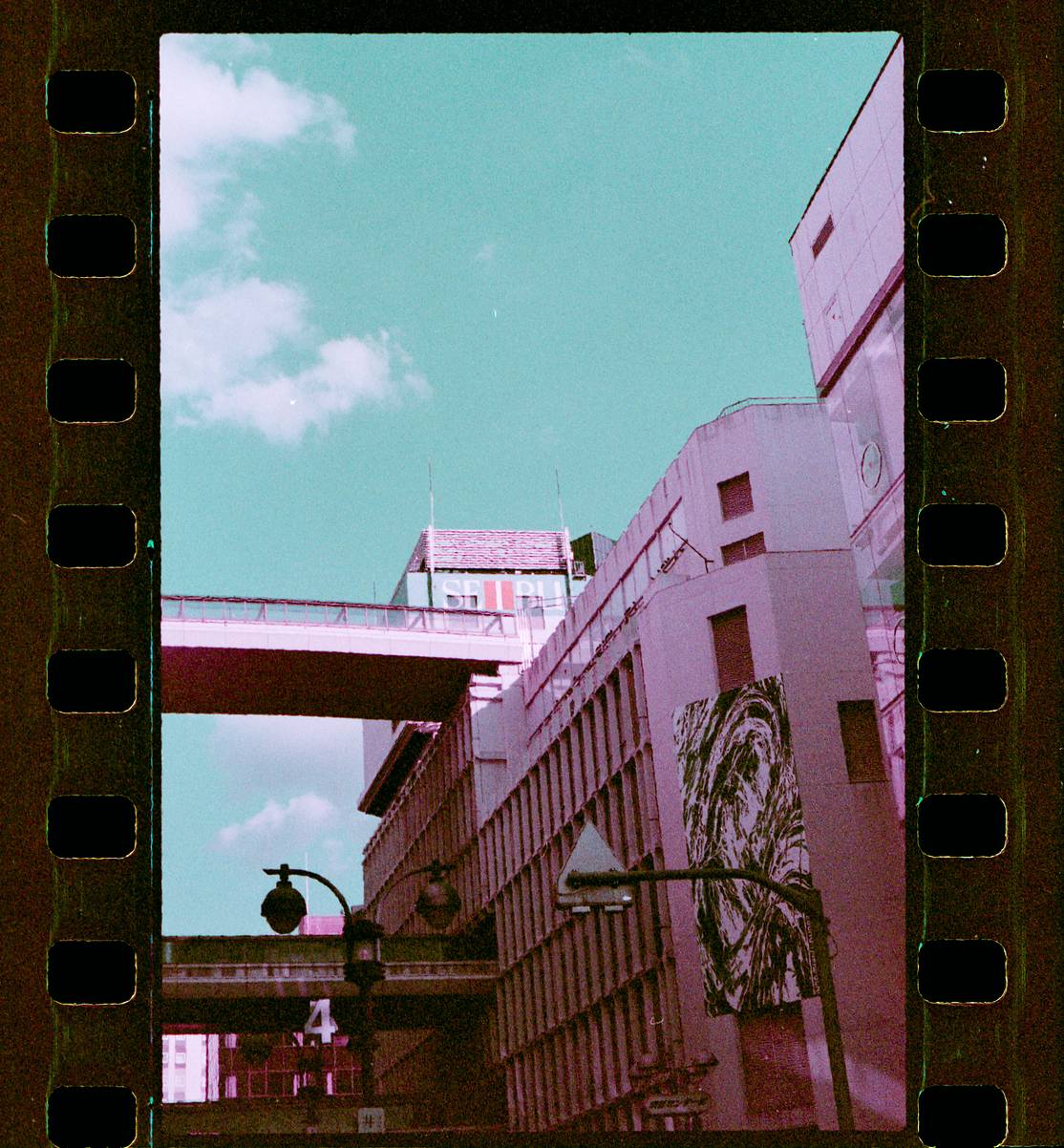Street Photography is All About "Walking Around": An Interview With 5ickdude
9 Share TweetStreet photography is all about "walking around." Yoshimi Nakayama, AKA 5ickdude, started his film photography journey by wandering the streets of Tokyo. In this interview, he shares with us the philosophy behind his stunning street photography.
Welcome to Lomography magazine! Please introduce yourself to our readers.
My name is Yoshimi Nakayama and I shoot with analogue cameras in Tokyo under the name of @$ickdude. I go skateboarding in my leisure time. I really love that culture and attitude of skateboarders who foster each other on the street, also I think it's cool they yell 'sick, dude!' when insane tricks are landed. It's literally where my profile name came from.
Why do you shoot film? And what brought you to analogue photography?
As a teenager, when I first encountered the culture of taking pictures with friends, there were no smartphones, and digital cameras had not yet spread as of today’s lifestyle, so I remember buying a disposable camera to record the daily life of my youth. It wasn't the trigger, but I was already the last generation to have experience with analogue photography. Then, in 2018, when I was traveling in Los Angeles, there was a vendor at the Rose Bowl, one of the city's largest flea markets, that only sold analogue cameras (I've been to LA every year, so I've been interested in this vendor for a long time.) When I was looking at the store, the owner picked up a camera called Canon AE-1 Program, and he explained how to use the camera since I had never had a film camera, and I asked, "Does this work properly?" The owner of the store said, "The battery has just been changed and it works perfectly, so you can take good pictures." It was fully functional and included a standard lens for $120.
The very first film I used was Kodak Ektar 100. The film I used happened to be Ektar, and I was amazed at the beautiful grain of the results after development. I photographed life in the desert of the California Joshua Tree with my first 35 mm single-lens reflex camera. Until then, I was shooting with a digital camera, but in the case of digital photography, I processed the finished photos to some extent, adjusted the colors to the more desired color, for posting on Instagram. I lost track of what was the real view I had seen. Photographing with a digital camera became very ambiguous, while with photographs taken with film, on the other hand, I was more and more fascinated by the clarity of the color, as the color was determined by the characteristics of the film itself and the chemical reaction between the light and the film.
Also, even if you just use a standard color film, you can still feel the nostalgic colors of those days when you were a student. Measure exposure, set aperture and shutter speed based on measurements, focus, and press the shutter. There is almost no obscure process for analogue shooting. The more proficient you become, the easier it will be to understand why a flare appears, or why this one frame is completely white. This is the most difficult part of analogue photography, and the most enjoyable part. Also, I think I can create a certain kind of nice tension when shooting with film. Both the photographer and the subject take pictures with the recognition that it is film, so as long as it does not fail, I think it has the magical power to create a wonderful moment and wonderful results.
What is the source of your inspiration?
Fortunately, I grew up surrounded by analogue things during my adolescence, so I am often inspired by the 80s/90s subculture. I think it was because I was able to imprint in my eyes the colors of the rich furniture, posters, packaging, clothes, Famicom, Walkman, Game Boy, etc. of the 80s/90s.
For me, skateboarding is the precise inspiration and I often get a lot of inspiration from skaters on the street. Good movies are another inspiration. I used to watch a lot of movies on VHS at the time, which is why I still like movies. Recently, I prefer ensemble movies, such as Paul Thomas Anderson's Inherent Vice and Tarantino's Pulp Fiction (both films shot on 35/70 mm film.) I am very influenced by the details in movies shot on film.
Are there any photographers you admire or whose works you learn from?
There are many, whether professional or amateur, and thanks to Instagram I have been able to meet film photographers from all over the world. Their way of photography and their way of thinking inspires me every day. Also, I try to be conscious of the photos of people around me and not use them as my examples. I have liked Naoki Ishikawa for a while now. As much as his photography, he's also a climber who has climbed Mount Everest, so I like his way of life more. I bought his photo book called STREETS ARE MINE, not only about mountains, but also about his hometown Shibuya. But I haven't opened it yet. The reason for this is that I go shooting Shibuya, so right now I want to focus on my findings on the city.
I also love Greg Hunt's Ninety-Six Dreams, Two Thousand Memories. It's a wonderful collection of photographs. I already knew the model skater 'Jason Dill', a fellow skater and the subject of his photo book. Although he was not an idol skater, he was a great skater from that time. This is a photo collection that has continued to follow J.Dill. In this photo collection, there are many scans that even include perforations. It was a part that conveyed some real and behind-the-scenes elements, and the first time I saw film border scans.
How did you start shooting street photography? And why choose film for street photography?
It was natural because I was always on the street and had a film camera. Now, I often go to Shibuya to prepare first thing in the morning. To be honest, I don't think it has to be film photography. Digital cameras can store thousands of photos, and they are lighter and faster. But for me, even though quick shots of the street are required, film cameras are more fun to shoot. And depending on the camera you choose I think a film camera is enough to keep up with chasing the speed of the street. Now I think that I can shoot more like myself by shooting with a film camera.
Cities are places where people of all ages come and go. There are different characters that appear depending on the time of the day, and you can find a quiet place just by turning one alley where you can forget the hustle and bustle of the city central. Recently, when I went to Shibuya early in the morning, I saw an elderly couple holding hands and walking steadily in the middle of the center street. There are often happy discoveries in such a big city. For me, taking a photo with film is to create a thing – the negative at the same time. It is closer to drawing a scene on paper.
How do you define street photography?
“Walking around” is a definition of street photography for me. Walking from road to road, the body and consciousness are constantly changing, and feeling the atmosphere of the city increases the chances of encountering discoveries. It's also good to cherish the intuitive feeling of "I want to walk this alley!" By getting lost in the city, you can also acquire a tourist perspective that makes you feel like you've come to an unknown planet. Familiar cities also give you a more local perspective on the lives there. At such times, when I notice myself reacting to something, I press the shutter and just start walking again.
One of the things that makes your photography unique is your contact sheets. Could you tell us a bit about them?
I think that contact sheet printing is meant to be used conveniently, such as quickly detecting overexposure and underexposure when printing on paper. Similarly, with my digital contact sheets, by arranging all the negatives and correcting them in Lightroom all at once, it is possible to know the intensity of exposure and saturation. On the other hand, I tend to enjoy more visual detection. In street photography and road trip photos, you don't just shoot a single photo, but a contact sheet in which various scenes and elements are scattered systematically, like chasing the same area or one event over many rolls. I would be happy if people could understand that negatives are treasures by publishing contact sheets.
The process is simple. Sandwiching the negatives between two layers of anti-reflective glass while scanning with a flat-bed scanner. By doing so, it is possible to capture the entire negative including perforations. Then, in Lightroom, we perform color adjustments one by one while maintaining the proper characteristics of the film itself. Finally, connect all 36 frames on Photoshop to complete.
Some of your images have sprocket holes scanned as well. Could you tell us why? Also, Do you think there's any change in viewers' perspective seeing the pictures with sprocket holes and the ones without them?
Digital photo technology has evolved to such an extent that it is difficult to tell whether it is digital or analogue. This is a great thing. In such a situation, I think it will also lead to the answer to the question of why we continue with film photography. I like skateboarding, I like good movies, I like architecture and analyzing the city, I like film photography...all of these are things that you can't get results without a “process”. Since I like film photography, I want to expose the process and want people to know about it.
When I first saw an image that had been scanned including film perforation, I didn't know how to do it, and after a lot of research, I finally found out the current method. When you look at the perforations and the photo at first sight, in most cases you also see the manufacturer's film code (film name) engraved on the perforation frame. More than anything else, it proves that it is analogue photography, and I think the meaning of looking at this photo with perforation is that it makes me feel a nice nostalgic feeling. I feel like I can see the essence of film photography. I don't think there's much of a change for those who see the work (some people may even find the perforation to be annoying), but those who see it for the first time always seem impressed or surprised.
Your Instagram feed seems to have some sort of continuity. Is that something you deliberately pay attention to?
I am very conscious of continuity, consistency, and confrontation. Especially in the city, there are many fascinating discoveries in complexity and contradiction. I think you can convey the realism of shooting with an awareness of the continuity before and after one frame, not seeing one photo but a scene. Also, in a posting method that combines perforation and this continuity, I usually use Instagram's Carrousel function to post from the 1st to 6th photos of the one roll. I've been posting a lot lately. The very first shot of the roll is so interesting to see.
How do you use color and black & white? And what are your favorite film stocks?
I would like to take more of black and white photos from now on. It's intuitive, but recently I've been wanting to continue shooting the beach elements of waves and coastlines only in black and white. I really liked the dark and iconic impression of the palm tree when I saw them in black and white. Lately, I like to take black and white photos at night, where the contrast is strong in the city. I think everyone is the same, but I am conscious of wanting to use monochrome in interesting places. On the other hand, I have a feeling that I will shoot everything in black and white eventually. I really like monochrome photography.
I love all Lomography films, but my favorites are Lomography Color Negative 35 mm ISO 400, LomoChrome Purple 35 mm ISO 100–400 and Lomography Color Negative 120 ISO 800. The Lomography 400 has such great color rendering that it is very well suited for capturing colors in a busy urban scene.
You also shoot some portrait photography. Can you tell us a bit about that?
I would like to shoot more portraits in the near future, but since I am a bit of a shy guy, the model is usually my wife or a friend. Both are portraits based on a strong relationship of trust between the model and me. I need to understand the person before I try to shoot a portrait, but I feel I really like doing portrait work. Family and friends are already well known, so I can proceed with the photos relatively easily. I used Lomography 100 (120) with a Mamiya M645 medium format camera for a portrait shoot in Togoshi Ginza, Shinagawa-ku, Tokyo. I took portraits of my friend Joe, from junior high school days. It felt like a junior high school student's summer vacation, but what you see is a grown-up friend. We've had a close relationship since we were kids, so we shot while relaxing and fooling around with each other. I feel that such experiences will continue to shape my portrait photography style in the future.
Any last words for the readers?
Shooting with film cameras can be a little tricky. But it's a wonderful experience, and it leaves a photo as an 'object' that will become a treasure. The community of film photography is very open and there are always helpful people. Lomography is another very innovative and active community. I recently inherited a camera that my father used. It is in a very good condition and I love it. I think the camera is one of the few tools that can be inherited from the past to the present. You will encounter cameras in various ways, and at such times, I would like you to take a step forward and try to shoot.
To see more of 5ickdude's photography check out his Instagram profile.
written by kota_97 on 2023-03-20 #culture #people #places #tokyo #street-photography #japan #lomography-color-negative-400 #lomochrome-purple











































No Comments